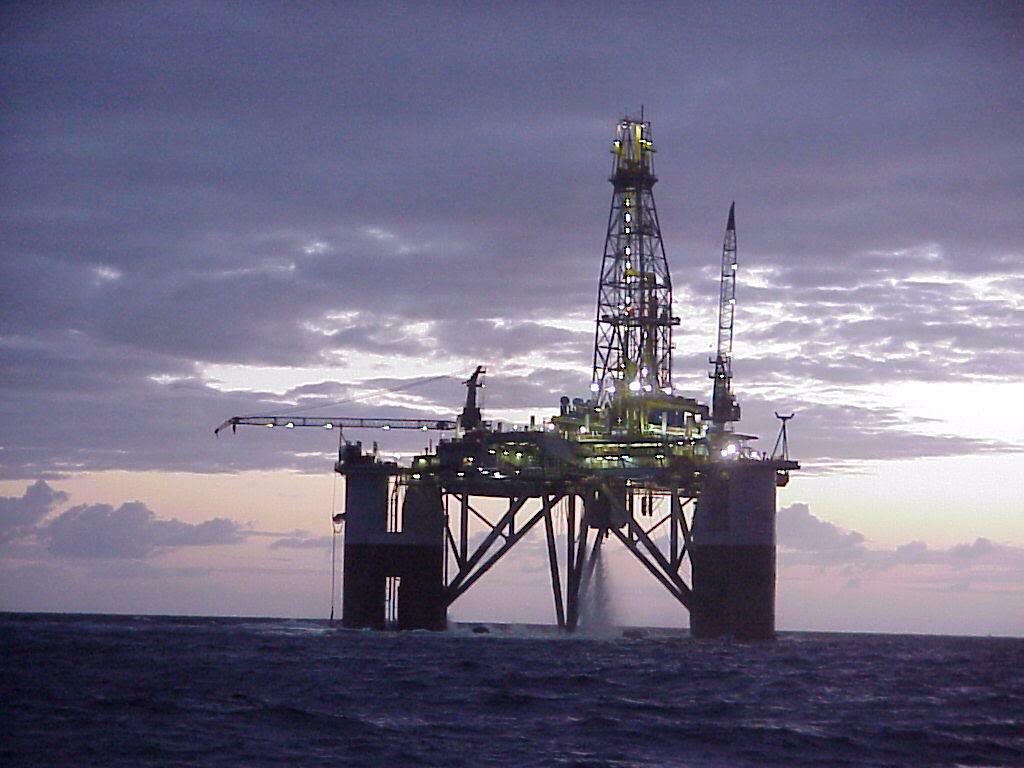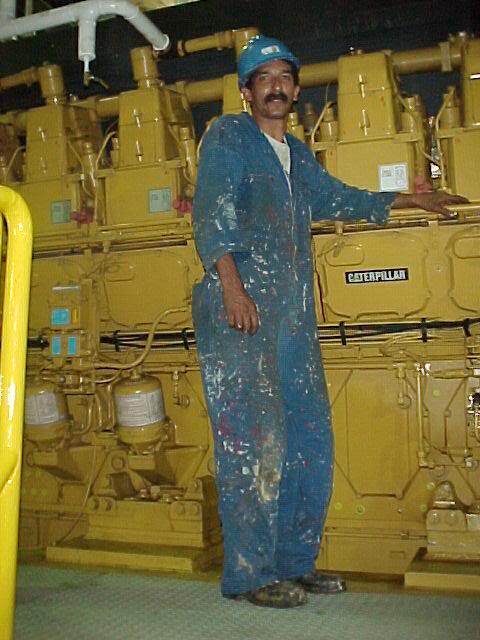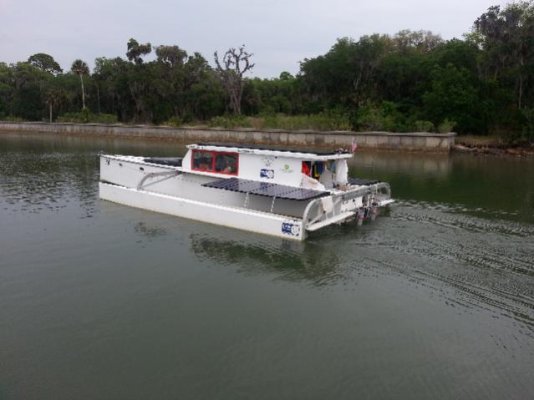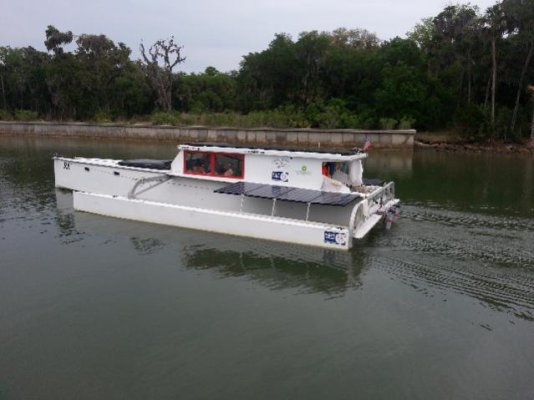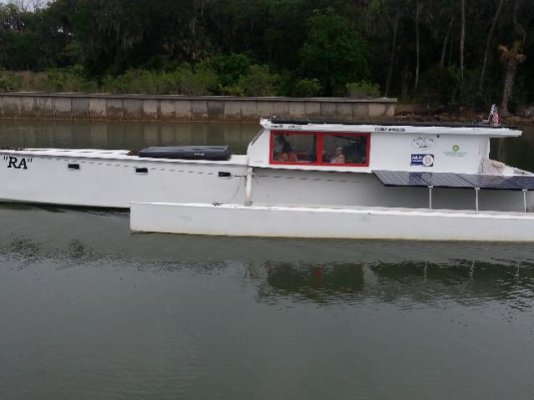Yes, You Can!
The key to a pure electric powered boat is modest expectations. Having owned Sunshine (our prototype DSe 12m) since we launched her in 2008, I feel I can speak with experience.
At the time of building Lithium batteries were not developed to the point where we felt they were worth the price. Our initial 400 AH/48 v Odyssey battery lasted just about 5 years. When due to be replaced, we DID use Lithium, upping the capacity by 250% (to 1,000 ah) and using the same space and weight. Now we have the electric "gas tank" that we need.
We also used 6kW of solar panels (forget making your own, you can now buy them for less than $1/watt) - from Sun Power (who still makes the highest efficiency cells commercially available) at about $4.50/watt. I would love to have more but felt that cantilevering cells out over the water was not commercially viable.
What we felt was the best hybrid solution shipping at the time (late 2007) was the Steyr parallel hybrid. Today there are multiple solutions available for parallel and serial hybrid and as you are desiring, non-hybrid, pure electric.
Now for your expectations:
1. Modest. By modest, I mean limited speeds for limited distances with enough power left over to get you through to the next charging cycle. We feel that we can sustain about 3.5 knots indefinitely with 6kW of solar array. This was the average speed of a similar catamaran that crossed the Atlantic using Sun Power cells several years ago.
2. Modest. While on the hook, budget your energy use - turn off the lights when you're not in the cabin (most mothers taught us this growing up). Use air conditioning rationally. Equip the boat with energy saving equipment - LED lighting - induction cooking - high tech refrigeration.
3. Modest. Keep weight down as much as possible. You won't have a heavy iron diesel, but you will have a heavy Lithium battery. This is one of the big mistakes we made with the DSe - we wanted her to compete in the luxury trawler market - so we made her interior as finely finished as any made in Asia. Unfortunately, that interior is heavy.
4. Long and Lean - we are working on a trailerable, shippable, electric (hybrid optional) cruiser to compete with the 30 footers. To do this, we'll make her 12 meters long with a center hull of 7' wide - sponsons will extend port and starboard for balance and walk-arounds. The center hull has a water-line beam of 36". The longer and leaner the hull(s), the less resistance up to hull speed. Look at the hulls of rowing shells.
5. Simple interior - maybe use canvas products for stowage and surface coverings. Light counter tops (no granite).
6. Add small wind - a wind turbine rated at 1 kW - 1.5 kW will actually produce around 350 watts on average, day and night, day after day.
7. If you're not a purest (but I feel you might be?), add a 48v DC generator - the smallest one from Fischer Panda will do.
8. Add a 3kW or bigger shore charger. Run all your current from shore to the charger then from the battery to DC/DC converters for 12v loads and intertrer(s) for 120v/240v loads.
9. Our feeling is having an expectation of about 25 NM/day at up to 5 knots (calm). If you need to cross the Gulf Stream to Bimini (about 50 NM), you'll have keep your speed at 3.5 knots or less. Expect to stay at anchor no less than a day or two to build up a depleted battery.
In spite of the nay sayers above - it can be done. Yes, you cannot go into a store and buy one off the shelf. But, you may be old to recall, you couldn't buy a computer off the shelf either. Didn't mean computers didn't work, just you couldn't buy one. You could lease one from IBM or build one yourself.
First step is to find a suitable multihull sailboat to buy - I like the Vietnamese ones that have fold out sponsons (tri-hull), though a good cat will work OK, too. A cat will need two motors rather than one and you may have to break the battery in two to fit.
That should be enough for you to consider?

